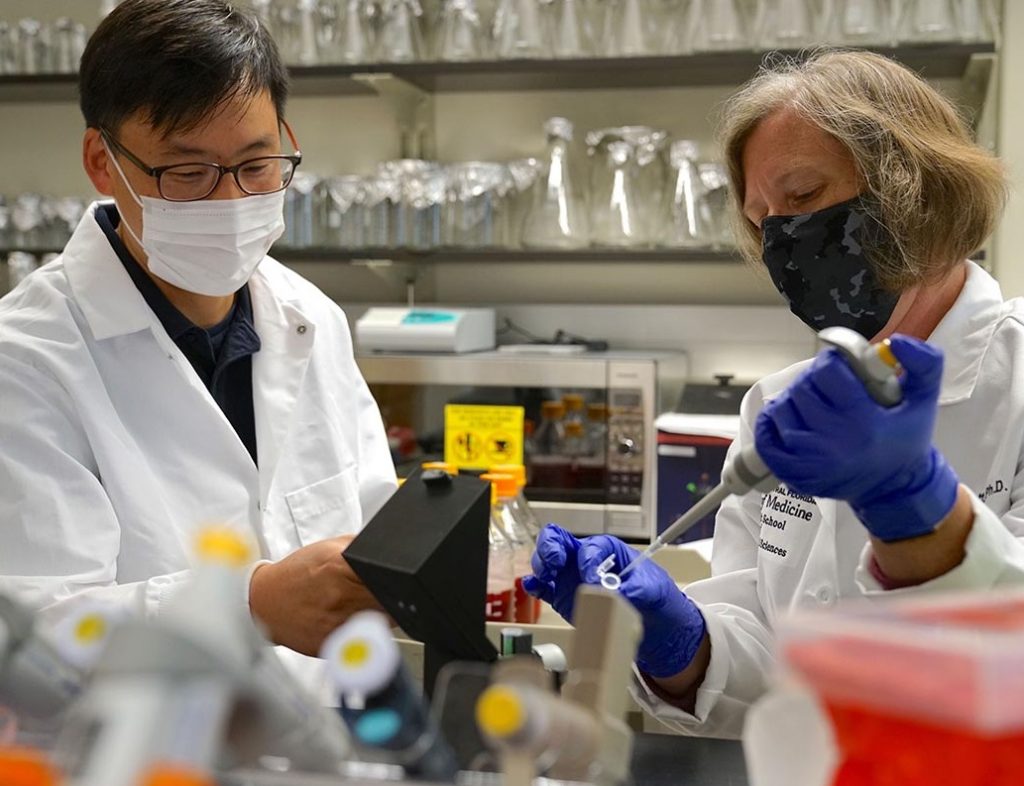This rapid test directly detects Lyme pathogens along with antibodies

By Suhtling Wong-Vienneau, University of Central Florida
Mollie Jewett, associate professor and head of the Immunity and Pathogenesis Division at the College of Medicine and Brian Kim an assistant professor in the College of Engineering and Computer Science, will split a $325,000 grant over two years from the Global Lyme Alliance to create a rapid test that can detect the disease weeks earlier than current tests allow. The new test would eliminate the need to visit diagnostic labs and wait for the results.
Lyme disease is carried by deer ticks and infects people when they are bitten by ticks carrying the bacteria Borrelia burgdorferi. Deer ticks are especially common in the northeastern United States and people are exposed to the ticks usually during outdoor activities.
Warming temperatures have helped tick populations explode and infiltrate more areas of the country increasing the chance of getting the disease.
The Centers for Disease Control and Prevention estimate that 476,000 people are infected with Lyme disease every year.
Early symptoms of Lyme disease are fever, headache, fatigue and the possibility of a telltale bullseye rash at the site of the bite. If left untreated, the infection can spread to the joints, heart, and nervous system and cause debilitating long-term conditions.
Speedy diagnosis
“Testing is a real obstacle for patients, the longer the patient goes without treatment the higher the potential for significant persistent symptoms,” says Jewett. “Lyme disease antibodies takes up to 14 days to become detectable. By directly detecting the bacteria that causes Lyme disease, the test will fill the current blind spot in the time from infection to diagnosis.”
When the infection is caught early and treated with antibiotics in the preliminary stages, patients can recover quickly without long-term effects.
Jewett is creating a molecular test that can not only test for antibodies in the blood specific for the infection, but also directly detect the bacteria that causes Lyme disease. The hand-held diagnostic device which the researchers call the Lyme iDS, combines Jewett’s molecular test with Kim’s detection device.
“The science and technology behind the device can be applied to many diseases using biological fluids such as blood in the case of Lyme disease,” says Kim who has successfully applied his testing device for detecting HIV, Zika virus, tuberculosis and COVID-19. His goals are to make testing easier, faster and cheaper by building a device with less expensive components that performs as well as current more expensive and bulky instruments.
Griffith Parks, the College of Medicine’s associate dean of Research and director of the Burnett School of Biomedical Sciences, praised the collaborative research project.
“This is prime example of how two outstanding researchers can partner to address an important biomedical problem from new complementary points of view,” says Parks.
“We are excited to have faculty from the College of Medicine working closely with the strong faculty in the College of Engineering and Computer Science.”
SOURCE OF PRESS RELEASE: University of Central Florida




















We invite you to comment on our Facebook page.
Visit LymeDisease.org Facebook Page